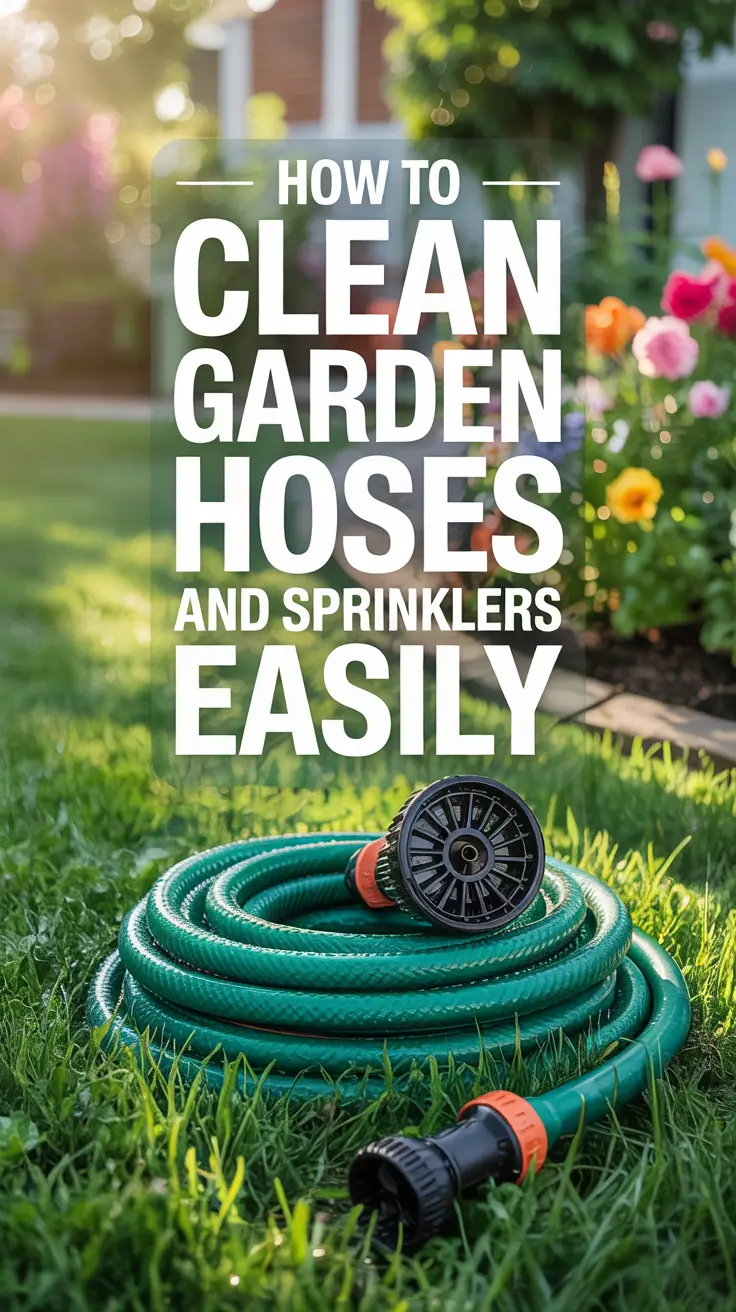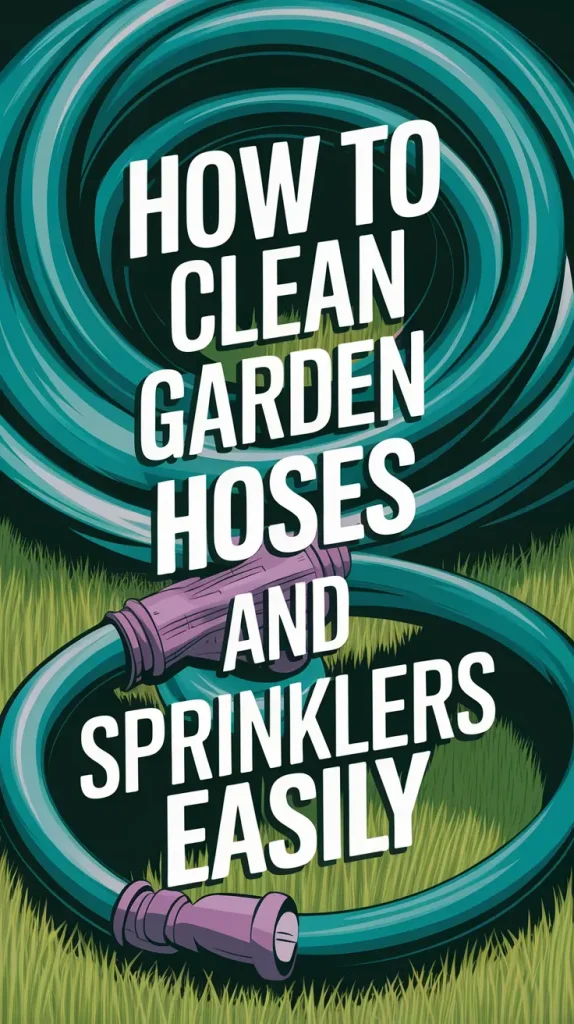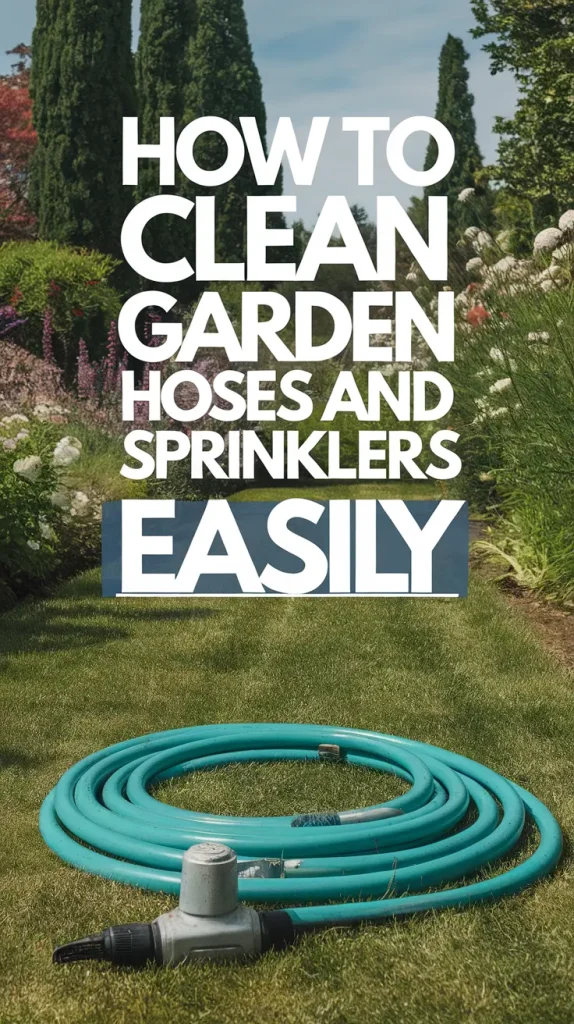How to Clean Garden Hoses and Sprinklers Easily

I’ll always remember the day I went to water my roses, turned on the hose — and noticed a faint smell and very little water coming out. Not exactly the peaceful gardening ritual I’d imagined. At first, I thought it was the faucet. Then maybe a kink in the hose. However, the main issue was hidden away, slowly getting worse.
As a result of that little mystery, I tried many DIY ideas, tested them at home and made plenty of mistakes along the way. As it turns out, cleaning garden hoses and sprinklers matters for their performance, how long they last and the quality of the water.
If your watering tools are not performing well anymore — or if you want to keep them working longer and make gardening easier — this guide is for you. I’m walking you through exactly what I do, what I’ve learned (sometimes the hard way), and how to make it all easy.

Why Cleaning Your Garden Hose and Sprinklers Matters
This part surprised me…
I thought that all you needed to do with a garden hose was keep it tidy in storage. I’m sure they aren’t getting all that dirty since water is going through them. The fact is, these things collect algae, rust, minerals and bacteria over the years, especially if they are stored in the sun or with water inside.
Sprinklers are no better. Small nozzles often become blocked by dirt, sand and hard water. The stream can get weaker, become unpredictable or just stop flowing.
Here’s what can happen if you don’t clean them:
- Water pressure drops
- Hoses develop unpleasant smells or even mold
- Sprinkler heads spray unevenly or not at all
- The system wears out faster
This isn’t just about keeping things tidy. It’s about functionality, safety, and ease. Once I started treating my hoses and sprinklers like actual tools — not just accessories — everything changed.
The 3-Step Routine That Keeps My Hose Like New
It started with a vinegar bottle…
I was ready to throw out my hose. The water smelled off, and I assumed it was past saving. But I decided to try one last experiment before giving up — and it worked. Since then, this has been my go-to method every few weeks.
Here’s my easy process:
- Drain and straighten the hose
I lay it out fully on a sunny spot, lifting one end to let all water escape. Bonus: the sun helps soften the hose and makes it easier to handle. - Fill with a vinegar solution
I mix equal parts white vinegar and warm water, then pour it into the hose using a funnel. I plug both ends (you can use caps or even plastic wrap and rubber bands) and let it sit for 30–60 minutes. - Rinse thoroughly and hang to dry
I flush the hose with clean water — usually by reconnecting it to the spigot and letting the flow push everything out. Then I hang it over a railing or hook to dry completely.
That one hour of care saves me from bigger issues all season long.
Cleaning Sprinklers Without Breaking Them
The trick? Small tools and a gentle hand.
My biggest mistake used to be thinking I could just blast the sprinkler clean with pressure. Spoiler: I cracked more than one plastic head that way.
What actually works is slow, simple cleaning with basic household items.
What I use to clean my sprinkler heads:
- A soft toothbrush or bottle brush
- Toothpicks or thin wire for nozzle holes
- Distilled vinegar or diluted lemon juice
- A towel or microfiber cloth
- A bowl or bucket for soaking
I start by removing the sprinkler (if it’s detachable), then soak it in a warm vinegar bath for 30 minutes. This loosens up any mineral buildup. Then I gently scrub with a brush, clear out the nozzles one by one, rinse well, and let it air dry.
This process takes maybe 20 minutes — but saves me hours of frustration later.

Natural vs. Store-Bought Cleaners: What Actually Works?
I tested both — and here’s what I found.
At one point, I was tempted by the promise of “professional” hose and sprinkler cleaning agents. I tried a few — and while some were powerful, they also felt harsh (not to mention expensive). Vinegar, on the other hand, never lets me down.
Unless you have heavy-duty buildup, the vinegar method wins for me every time.
What to Watch for When Cleaning
These were my beginner mistakes…
Let me save you a little stress with a few things I learned the hard way:
- Don’t use boiling water in plastic hoses — it can warp them
- Always test vinegar or cleaners on a small section first
- Avoid metal tools inside nozzles — they can scratch or widen the holes
- Make sure the hose is fully dry before storing — mold grows fast in dark, damp coils
What I always do now:
- Choose early morning or evening (less sun = easier handling)
- Wear gloves if I’m using lemon juice or strong vinegar
- Label old toothbrushes clearly (“GARDEN ONLY!”) to avoid mix-ups
- Keep a small cleaning kit in my shed with all my essentials
It’s the little systems that make the big routines easier.
My Seasonal Garden Hose Ritual
It’s like a skincare routine… for my garden tools.
With time, I’ve built a seasonal rhythm that helps me stay ahead of problems — instead of reacting when something breaks.
Here’s what I do:
Spring
- Inspect hoses and nozzles for cracks
- Do a full vinegar flush
- Test sprinkler heads for clogging
Summer
- Quick rinse every few weeks
- Spot-clean sprinkler nozzles
- Store hoses in the shade after use
Fall
- Deep clean everything before storage
- Fully drain and coil hoses
- Treat metal connectors with a silicone sealant
This doesn’t take hours. I often have it on hand for when I garden and it’s always there when I need something.
The Unexpected Joy of a Clean Water Flow
There’s a peaceful feeling when your water is strong, clean and clear, as if your tools are helping you rather than holding you back.
Before I started doing regular cleanings, I’d dread watering. Now? It’s part of my ritual. Holding my coffee cup and hose, enjoying the cool morning air, no bad smells and no slow leaks.
The effort is small. But the reward is steady.
Final Thought
If you haven’t cleaned your hose or your sprinkler doesn’t seem right, it’s a good time to spend 30 minutes on it. I promise, it’s worth it.
Pin this if you’re thinking about starting a seasonal reset — and don’t forget to let me know.
What’s a small thing you did in your garden that made things simpler?

